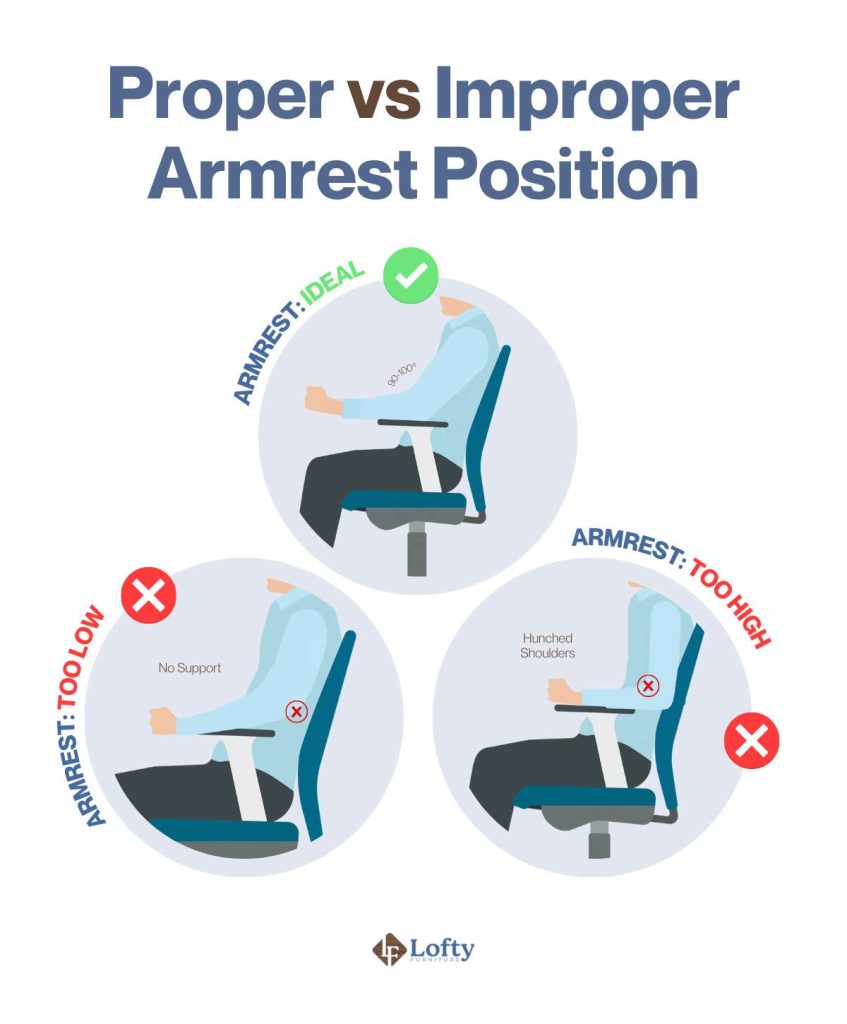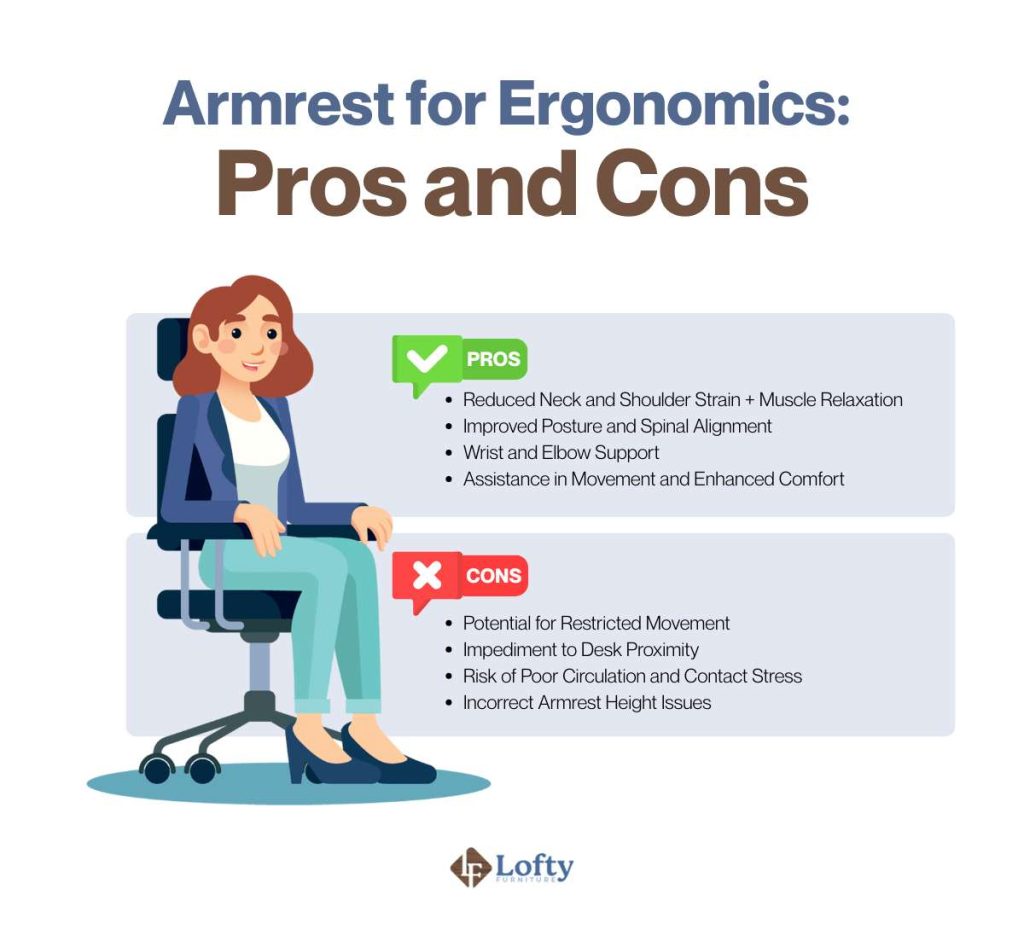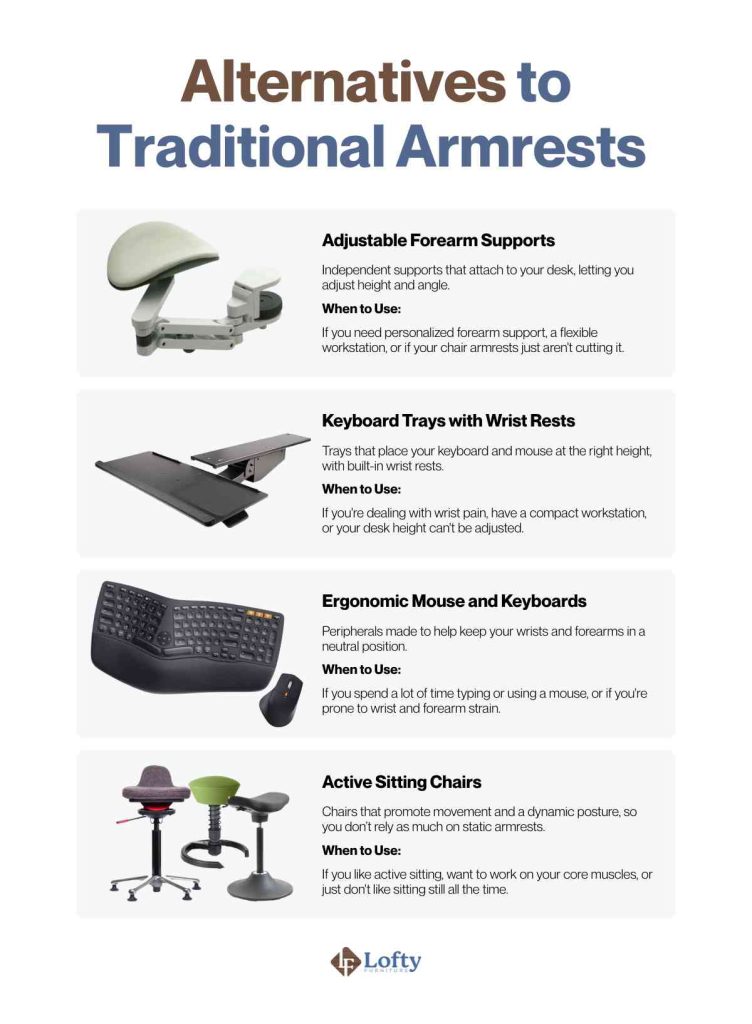When it comes to creating a comfortable and productive workspace, every detail counts—and one of the most debated features of office chairs is the armrest. While some swear by them for added support, others argue they can cause more harm than good. If you’ve ever wondered whether armrests are truly beneficial for your posture or if they might be getting in the way of your comfort, you’re not alone. So, are armrests truly beneficial for ergonomics, or do they do more harm than good?
Key Takeaways
- Armrests need to be adjustable in height and width to keep your arms supported and your posture relaxed, preventing pain or injury.
- When set up right, armrests support your arms and reduce strain on your neck, shoulders, and back, helping you sit more comfortably.
- If armrests don’t fit your needs, options like adjustable forearm supports, keyboard trays, or active sitting chairs might work better for you.
In this article, we’ll break down the pros and cons of armrests and help you figure out whether they’re a must-have for your ergonomic setup or something you can do without.
The Role of Armrests in Ergonomic Seating
Armrests are more than just a place to rest your arms—they’re key to supporting your upper body and promoting a more comfortable, sustainable posture. By giving your forearms a place to rest, armrests help reduce strain on your neck, shoulders, and upper back, making it easier to sit for long periods without discomfort.
When set up properly, armrests can make a big difference in your overall comfort. The goal is to keep your elbows at a 90-degree angle, allowing your forearms to rest without putting extra pressure on your shoulders or wrists. If the armrests are too high or too low, it can mess with your posture and lead to aches or even injuries over time. Getting the right armrest height can help you sit more naturally and avoid those annoying pains.

Types of Armrests
Armrests aren’t a one-size-fits-all feature. They come in various designs, each offering different levels of adjustability and support. Understanding these variations is crucial for selecting an ergonomic chair that aligns with your specific needs and work habits.
Here are the different types of armrests and their unique characteristics:

The Pros of Using Armrests
When implemented correctly, armrests can significantly enhance ergonomic comfort and promote a healthier workspace. Let’s explore the specific benefits that armrests provide.
Reduced Neck and Shoulder Strain + Muscle Relaxation
Armrests play a crucial role in redistributing the weight of your upper limbs, effectively transferring it away from the neck and shoulders. Research has shown that consistent forearm support using chair armrests can significantly prevent and mitigate musculoskeletal disorders. Maintaining proper forearm support can decrease the load on the neck and shoulder muscles, leading to a substantial reduction in pain and discomfort during prolonged periods of sitting.
Better Posture and Spine Health
Armrests are instrumental in maintaining an upright posture, which is essential for spinal health. By providing a stable resting place for the forearms, armrests discourage slouching and encourage a more erect sitting position. This upright posture contributes to proper spinal alignment, reducing the risk of back pain. When armrests are correctly adjusted, they prevent the forward head posture and rounded shoulders that often result from prolonged sitting.
Wrist and Elbow Support
Supporting the forearms is critical for preventing wrist and elbow pain, including conditions like carpal tunnel syndrome and tennis elbow. Armrests provide a stable platform that helps to maintain a neutral wrist position. A study demonstrated that a moveable armrest arm support significantly diminishes critical wrist angles, leading to safer computer mouse use. This reduction in strain not only alleviates existing pain but also helps to prevent future injuries.
Easier Movement and More Comfort
When armrests are used properly, they help reduce discomfort, which leads to better focus and productivity. Without pain or strain, it’s easier to concentrate on what you’re doing. Plus, a comfy workspace has big mental benefits—it boosts your mood and helps cut down on stress.

The Cons of Using Armrests
While armrests offer numerous ergonomic benefits, they can also present challenges if not properly used.
Potential for Restricted Movement
If armrests aren’t adjusted properly, especially if they’re too wide or too narrow, they can make it harder to move comfortably. When armrests are too wide, you might end up leaning to one side, and if they’re too narrow, it can force you into a cramped position. This makes it harder to move freely and can lead to stiffness and fatigue, which totally defeats the purpose of having ergonomic armrests.
Trouble Getting Close to Your Desk
Non-adjustable or poorly placed armrests can make it hard to get close to your desk, causing you to sit in awkward, strained positions. If the armrests are stuck in one spot or in the wrong place, they can get in the way of your keyboard or mouse, forcing you to lean forward. That extra reach puts a lot of strain on your shoulders, neck, and back.
Risk of Poor Circulation and Contact Stress
Overly restrictive armrests can compress nerves and blood vessels, leading to poor circulation and contact stress. Leaning on hard armrests for prolonged periods can exacerbate this issue, causing numbness, tingling, or pain in the arms and hands. This compression can disrupt blood flow and nerve function, potentially leading to long-term health issues.

What to Keep in Mind When Choosing an Armrest Design
When picking an ergonomic chair, armrest design plays a big role in comfort and support. Adjustable height, width, and length are essential for finding the right fit for your desk and body. The padding and material are just as important. Soft, padded armrests reduce stress and prevent discomfort like numbness or tingling during long use.
Shape and positioning matter too. Ergonomically designed armrests support your forearms close to your body, encourage better posture, and reduce strain, making for a more comfortable and healthier workspace.
How to Use Armrests the Right Way
To get the most out of your armrests, it’s important to make sure they’re positioned right and fit well with your desk setup. Ideally, they should be just below elbow height so your arms and shoulders stay relaxed and neutral. You also want to make sure the armrests don’t stop you from getting close enough to your desk. Check that they don’t block you from being at the right distance from your keyboard and mouse.
Beyond initial setup, regular adjustments are key to maximizing armrest effectiveness. Users should be encouraged to adjust their armrests throughout the day to accommodate different tasks and promote movement.
For a visual guide on finding the correct position for arm support, you can watch this video:
Armrest Alternatives You Can Try
While traditional armrests are common, several alternatives can provide ergonomic support and address specific needs. Here are some of your best options:

Tired of armrest limitations? Discover true comfort and support with our ergonomic chair featuring versatile 3-way adjustable armrests – explore the difference today!
Are Armrests Good for Ergonomics? The Final Verdict
In ergonomic comfort, armrests play a nuanced role. While they offer undeniable benefits in reducing strain and promoting proper posture, their effectiveness hinges on proper design and usage. Understanding the various types of armrests, their potential drawbacks, and the importance of adjustability allows you to make informed decisions about your workspace. Whether you opt for traditional armrests or explore alternative solutions, the key is to prioritize your individual needs and create a setup that supports your health and productivity.
FAQs
How high should my armrests be?
Your armrests should be positioned just below your elbow height, allowing your shoulders to relax. Ideally, your elbows should rest comfortably at a 90-degree angle.
Are adjustable armrests worth the investment?
Yes, adjustable armrests are generally worth the investment. They allow for personalized adjustments to match your body type and work tasks, significantly improving comfort and reducing strain.
Can armrests help with carpal tunnel syndrome?
Yes, properly adjusted armrests can help alleviate symptoms of carpal tunnel syndrome by supporting your forearms and maintaining a neutral wrist position. However, they are not a cure and should be used in conjunction with other ergonomic practices.
What is the best type of armrest padding?
Soft, supportive padding is generally best. Materials like memory foam or gel-infused padding can help reduce contact stress and enhance comfort. The best padding is one that is not too firm, and not too soft.
